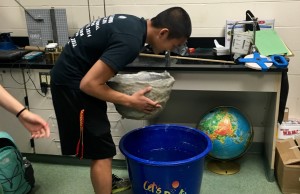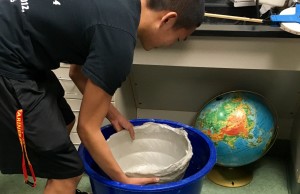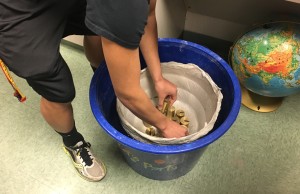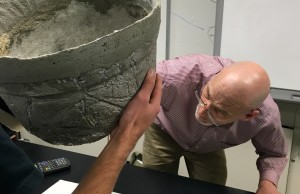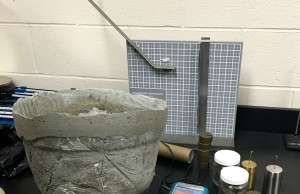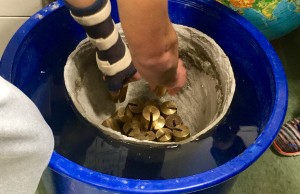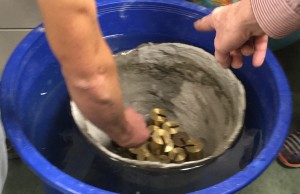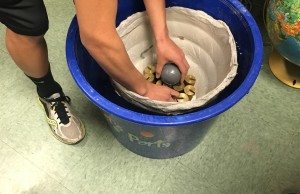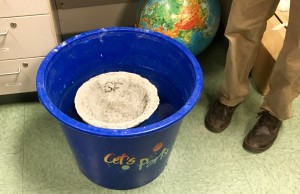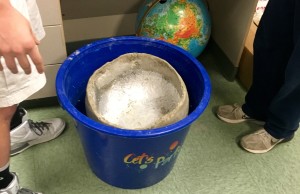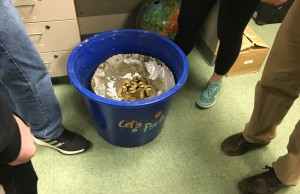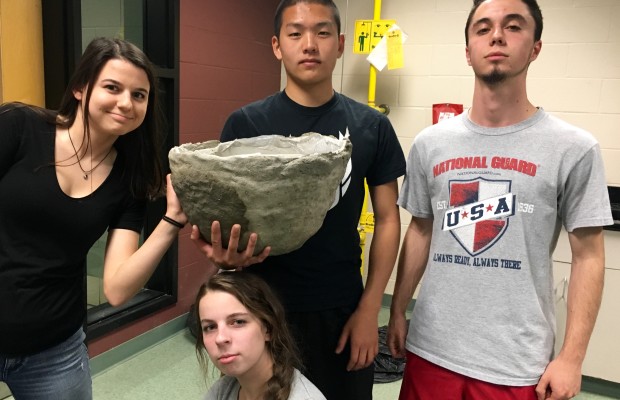To better understand the important facts in buoyancy, physics classes test the knowledge they learned throughout the fluids chapter. This is done by making a concrete boat–yes, concrete. Mark Mierzejewski, Woodland’s Physics teacher, randomly assigns students to groups, which together decide on an optimal boat shape, width, and wall lengths.
The groups then decide to make molds and mix concrete to create labs. The goal is to hold as much weight as possible, before the boat fills with water. The groups can only have concrete on the outside of the boat, and must make sure that the boat has not holes or is not too thick and tall.
After classes of preparation, the day came to test the boats. First, Mierzejewski checks the boat to make sure that is follows rules, weighs it. Then, it is time for testing–by floating boats in a “Let’s Party” bucket. While it was frustrating and stressful with most of the grade depending on the boat floating, students found it very helpful.
“Building the boats helped us all understand the concepts behind physics in a hands-on way. Instead of blindly working with equations, we had the chance to work what we learned out and put it to the test,” believes Physics student, Noelle Guerrera.
